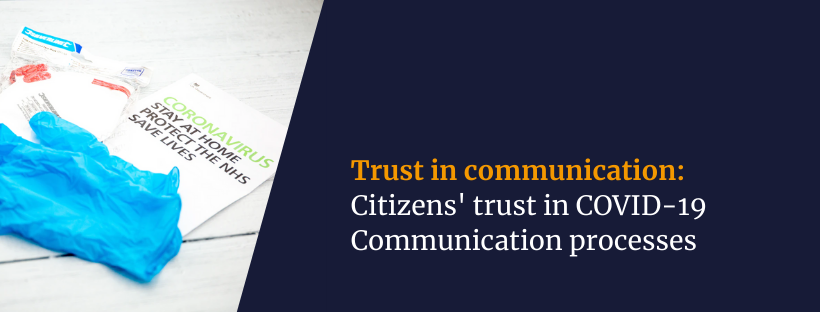Citizens’ trust in COVID-19 communication processes
By Giuseppe Pellegrini, Observa Science in Society Since the beginning and the spread of the Covid-19 pandemic across the world, it has been clear how a wave of misinformation has spread fake news and hoaxes proven difficult to fight. One of the numerous problems has regarded media and newspapers in particular, unable to communicate in the most comprehensible and concise way fundamental contents to readers. The kind of content that could have led people through fear and uncertainty of the present: uncountable photos, video and articles reported on the media without a proper fact checking have contributed creating a distrust attitude among people. Is this the way journalists and communicators are meant to deal with, in what is probably the most difficult time after since World War II? As pointed out by M. Bucchi, a good emergency and risk communication practice can help society address the “new coronavirus” crisis. Citizens must be able to (easily) find the most important and necessary information updated on official communication channels in an easy (and efficiently) manner (institutional websites of the Ministry of Health and Education or of the Regions, social media platforms etc.) Whose task is this, who has the responsibility to manage the communication at an institutional level? This should / could be emergency and risk communication professionals rather than marketers or press officers. The chosen media doesn’t have to be a personal Facebook page or a twitter account: always go official, institutional. (or: the chosen media to run communication through should not be FB or Twitter, but rather and always through official and institutional platforms) An open eye on what happens in different countries Assessing the current situation: several countries around the world are investigating the perception of public opinion about pandemic communication. What is happening in Sweden is demonstrated through an ongoing VA survey about the public confidence in researchers and public figures. “The ongoing pandemic presents major challenges for society. Communication is a crucial factor in the response to these challenges. Individuals, organisations and countries are all faced with making many decisions based on a limited but growing evidence base.” Fig. 1: VA (Public & Science) is conducting a real-time study, in collaboration with researchers at the Karolinska Institute and Södertörn University to understand how people receive and interpret information about the current pandemic. According to Secretary General of VA (Public and Science), Cissi Askwall “the public has had a great deal of confidence in health care professionals and researchers, and a much lower confidence in politicians and journalists. In Sweden, we also have great confidence in our authorities and public institutions, especially universities and university colleges. […] The ongoing crisis shows that good science communication can make a big difference. I hope this means that communication will be higher on the agenda in the research world in the long term.” A recent survey (April 2020) from Pew Research Center shows how the percentage of Americans who say journalists have exaggerated the risks of the outbreak has decreased notably. Fig. 2: Pew Research Center – Share of Americans saying media have exaggerated the risks of COVID-19 declined from March to April. Italian citizens and COVID-19 information communication Fig. 3: Italian citizens and three attitudes towards COVID-19 communication Thanks to a cluster analysis made on data collected in April by Observa – Science in Society, it is possible to identify and divide in three groups Italian citizens and their actual trust towards information sources: Institutional optimist (43%) – the one that trusts and informs himself/herself mainly through television news and institutional web channels. Considers positively both the communication work of the principal institutions and the role of scientific experts; thinks that effective solutions will soon come from science.Confused (35%) – isn’t able to express an opinion neither on the work nor on the quality of communication by the institutions. Searches for news on the media, from family and friends; the variety of experts drives him/her confused and has no high expectations when it comes to finding pandemic solutions.Social Pessimist (22%) – his/her position about actions and communication by the institutions is mainly negative. He/she relies more on people and social media news about the pandemic and criticizes the way scientists communicate and is pessimistic about a solution against coronavirus in a short time. Concluding, communication surrounding COVID-19 is met with challenges. Bill Hanage and Marc Lipsitch highlight the responsibility of scientists and journalists: “Emergencies like this one lead to extreme pressure on both scientists and journalists to be the first with news. We have a common responsibility to protect public health. The virus does not read news articles and doesn’t care about Twitter.”
